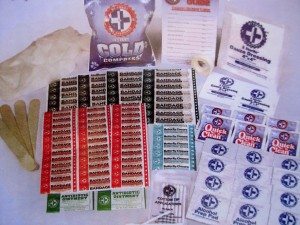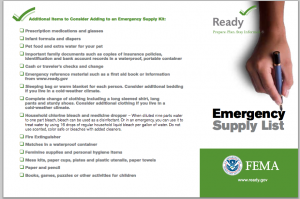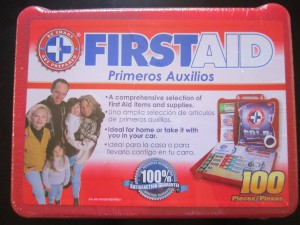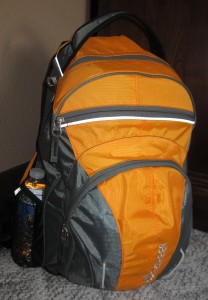Last updated on November 25th, 2023 at 01:37 pm
What is your level of Emergency Preparedness? Do you have an emergency supply kit for your family? An emergency could be an extended utility disruption, a natural disaster or other catastrophic event. Would you be able to care for your families most basic needs? While it is impossible to prepare for every event that could happen, having an emergency kit will help lessen the stress of the situation if an emergency should arise.
First have a family discussion about what sort of events you should prepare for in your area. During this discussion you should choose a meeting place if your family is not together when the emergency occurs and you must leave your home. Phone service can get jammed fast during emergencies due to the fact that everyone tries to call their loved ones.
Sometimes it is easier to make long distance calls so choose a family member out of state and make sure all family members know to contact them to check in. It might be beneficial to make sure they have copies of important paper as well just in case you lose yours in the process of the emergency.
Next you will want to want to make sure you have an emergency kit with supplies in your home. The New York City Office of Emergency Management (OEM) also recommends packing a “go bag” just in case you must leave your home. What should you have in these kits? New Yorker’s know all to well the benefits of this bag. Our own Natalie Diaz, has one packed and ready to go since living through September 11th. (If your not sure how to talk to your kids about that day, check out Nat’s article on that topic.)
In your go bag, you should keep enough supplies to care for your basic needs for at least three days. Make sure all family members know that these supplies are for emergencies only. Here is a list of recommended items from the US Federal Emergency Management Agency (FEMA)
- Water, one gallon of water per person per day for at least three days, for drinking and sanitation
- Food, at least a three-day supply of non-perishable food. (Nat says canned corn is great because it contains water that the corn is packed in as well!)
- Battery-powered or hand crank radio and a NOAA Weather Radio with tone alert and extra batteries for both
- Flashlight and extra batteries
- First aid kit
- Whistle to signal for help
- Dust mask to help filter contaminated air and plastic sheeting and duct tape to shelter-in-place
- Moist towelettes, garbage bags and plastic ties for personal sanitation
- Wrench or pliers to turn off utilities
- Manual can opener for food
- Local maps
- Cell phone with chargers, inverter or solar charger
You will need to tailor your emergency kit to fit your families’ individual needs.
Once you have gathered the supplies for a basic emergency kit, you may want to consider adding some of the following items.
- Prescription medications.
- Glasses. We put our old pair of glasses in our kit when we got new glasses.
- Child care items like infant formula, bottles, and diapers and a couple small toys.
- Make sure you have cash in the amount of $50-$100. If you need to make a purchase, plastic isn’t going to be much good to you if electricity or phone lines are out.
- Books, games, or other activities to keep your children occupied.
Don’t forget about Fido! Make sure to have enough water for your pet as well.
A “Go Bag” should be prepared in the event of an evacuation. This should be in an easy to carry bag like a backpack. Make sure it is easily accessible in case you have to leave your home in a hurry. Make sure you read “Ready NY. My Emergency Plan” for a check list of suggested items to include in this bag at the NYC-Office of Emergency Management
To maintain your kits check expiration dates of food and update your kits every 6 months. A good way to remember to do this is to do it when you change your clock during daylight-saving times.
Check to see if there is emergency preparedness information for your local region. Have you prepared an emergency kit for your family? What additional items do you include in your kit?
If you come across any additional resources for your area, please post them here so we can share them with everyone.
By Jill Marcum, contributing writer for Twiniversity











